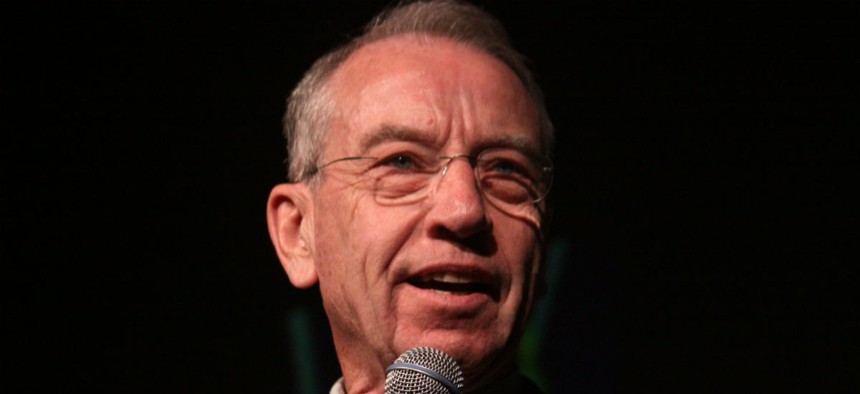Senator’s Push to Curb Administrative Leave Shifts to VA
Grassley troubled by department’s explanation of 6,000 paid for no work.
The chairman of the Senate Judiciary Committee on Friday expanded his push to reduce the number of federal employees who, because of pending investigations, are placed on paid administrative leave and perform no work.
Sen. Chuck Grassley, R-Iowa, wrote to Veterans Affairs Secretary Bob McDonald to complain that the department’s response to an all-agency query a year ago provided explanations on use of paid leave that were “were largely vague, incomplete or incoherent.”
In February 2015, VA reported to Grassley that it had placed 46 employees on paid administrative leave for a year or more and was preparing new guidance and a time-keeping system.
The Government Accountability Office separately found that VA had put 6,000 employees, or 2 percent of its workforce, on administrative leave for one to six months from 2010-2013. In fiscal 2014, the VA outspent all other agencies surveyed with respect to employees on administrative leave for a month or more, auditors found.
“The VA’s responses suggest it may be placing some employees on administrative leave for inappropriately long periods of time and that it does not adequately track or manage use of administrative leave,” Grassley wrote on Oct. 23. “Further, the VA’s incomplete responses to this inquiry make it impossible to fully evaluate the agency’s use of administrative leave, and thus frustrate meaningful oversight.”
The letter seeking clarification comes just days after Grassley made similar demands for data on administrative leave from the Homeland Security Department.
The Judiciary chairman is teaming with Sen. Jon Tester, D-Mont., on governmentwide legislation aimed at reforming administrative leave policies to accelerate decision making. The policy as currently executed has produced controversies over waste and fraud at agencies such as the Environmental Protection Agency, the Chemical Safety Board, and the National Archives and Records Administration.
In the VA’s case, Grassley cited its “troubled record of reportedly placing employees on such leave pending investigations into their inappropriate actions related to secret VA waiting lists, as well as accusations of using administrative leave as retaliation for employees who objected to instructions to manipulate appointment times or other improper practices.”
VA’s earlier response to Grassley’s broad inquiry said the department’s handbook “policy prescribes different processes depending on the reason for the administrative absence. The approval level for these absences may vary from the first level supervisor for short absences under an hour, up to the level of the secretary if all employees or large groups of employees will be excused from duty. Safeguards are provided by adherence to the VA policy at all levels of the organization.” VA added that its inquiries to staff to collect data used 160 hours as the floor for reporting extended leaves.
“There were a total of 2,560 employees on paid administrative leave for more than one month in fiscal 2014,” VA said in its letter to Grassley. “This equated to $22,998,095.52 in salaries paid. VA is unable to calculate the total cost.”
Grassley requested that McDonald supply, by Nov. 6, detailed answers to such questions as what actions the department is taking on implementing new guidance and a new time system. When, he asked, “will these new policies and time system enable the VA to explain why it placed nearly 2 percent of its workforce on paid administrative leave for between one and six months?”
“VA has received the senator’s letter and will provide a response directly to the senator,” a spokesman said.
(Image via Flickr user Gage Skidmore)








